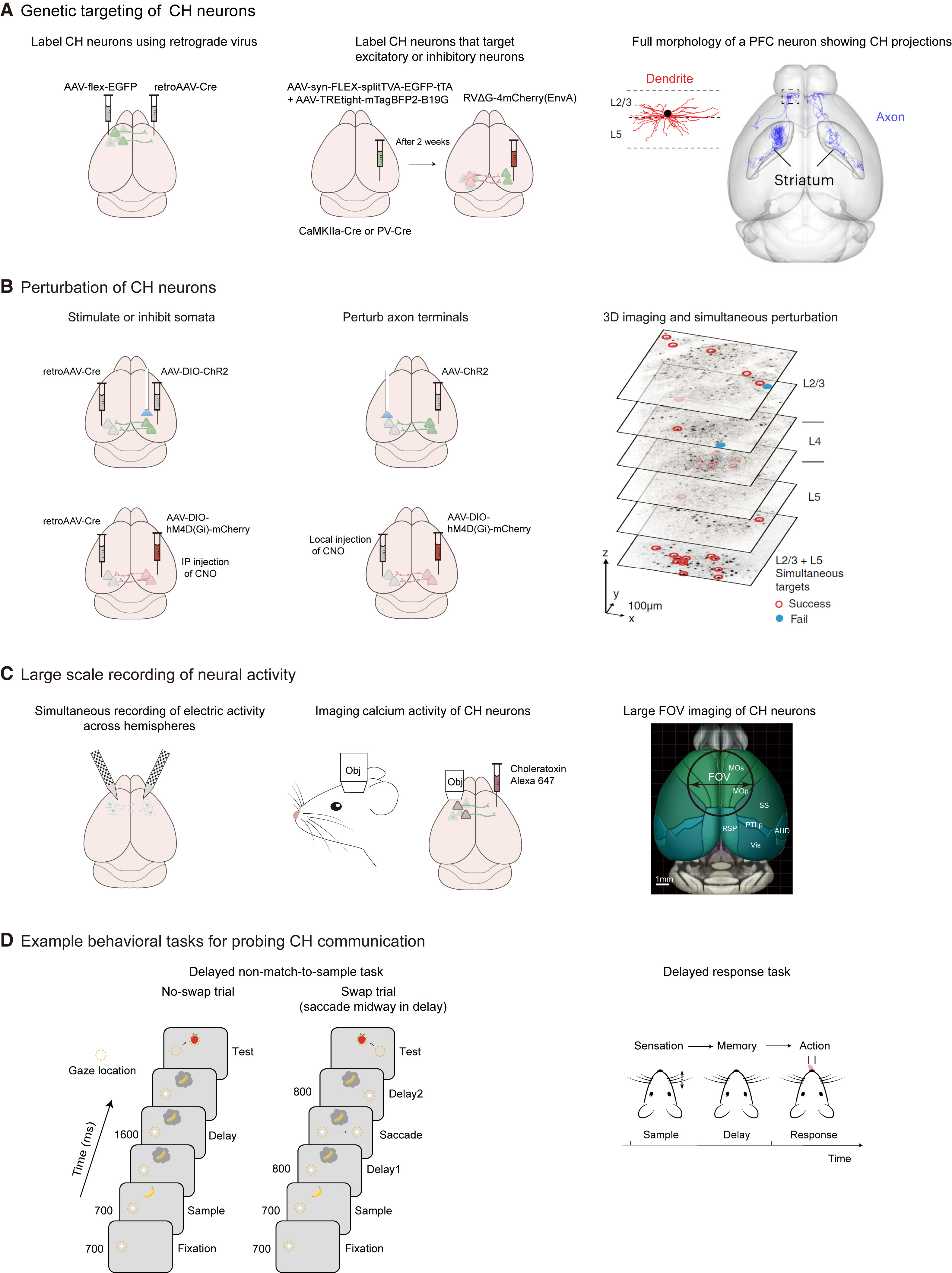Summary
On the surface, the two hemispheres of vertebrate brains look almost perfectly symmetrical, but several motor, sensory, and cognitive systems show a deeply lateralized organization. Importantly, the two hemispheres are connected by various commissures, white matter tracts that cross the brain’s midline and enable cross-hemispheric communication. Cross-hemispheric communication has been suggested to play an important role in the emergence of lateralized brain functions. Here, we review current advances in understanding cross-hemispheric communication that have been made using modern neuroscientific tools in rodents and other model species, such as genetic labeling, large-scale recordings of neuronal activity, spatiotemporally precise perturbation, and quantitative behavior analyses. These findings suggest that the emergence of lateralized brain functions cannot be fully explained by largely static factors such as genetic variation and differences in structural brain asymmetries. In addition, learning-dependent asymmetric interactions between the left and right hemispheres shape lateralized brain functions.

|
Paper Link: https://www.sciencedirect.com/science/article/pii/S089662732400120X?via%3Dihub
|
